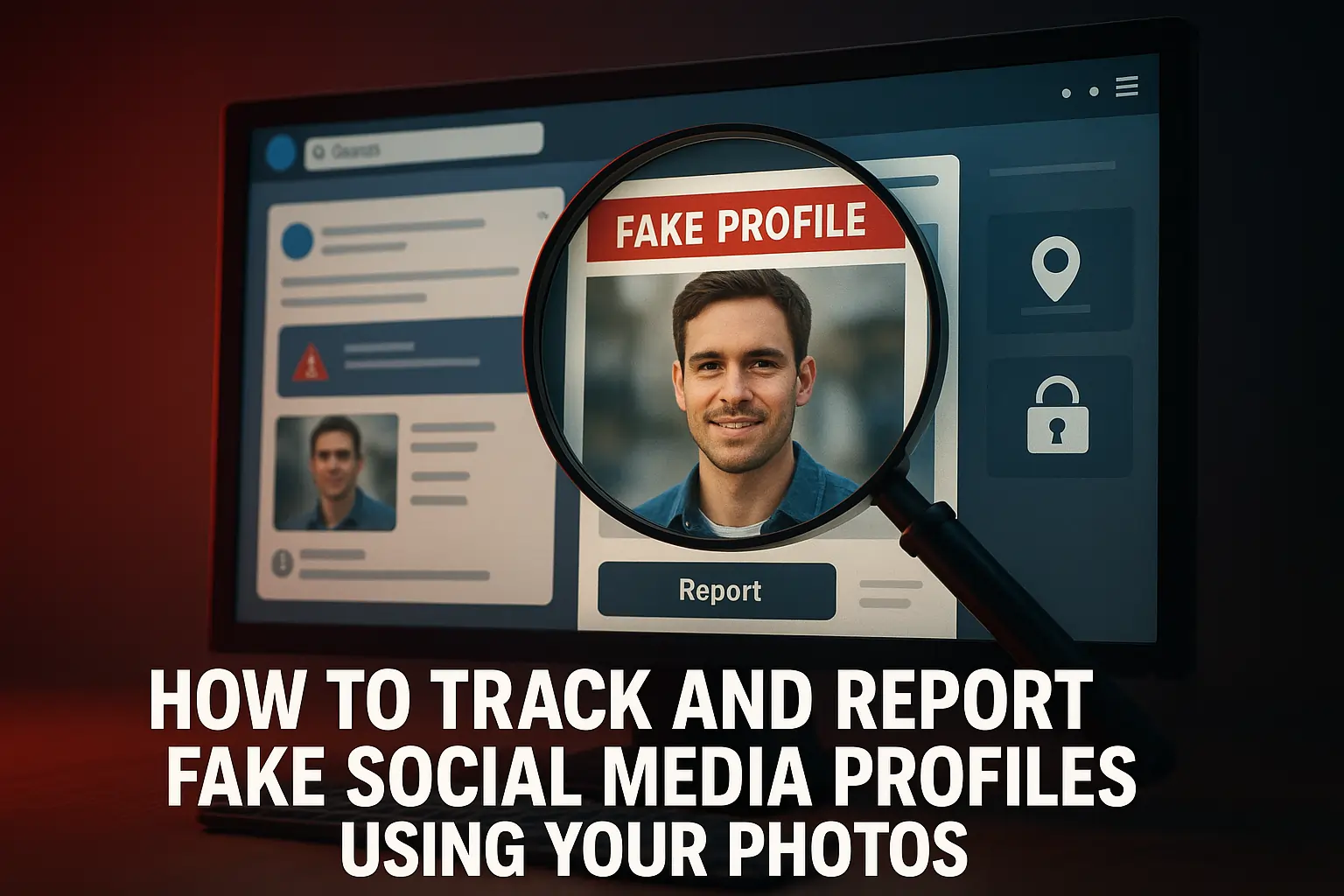How to Track and Report Fake Social Media Profiles Using Your Photos

Fake profiles aren’t just annoying; in fact, they can actually be more dangerous and damaging than you think.
How?
Let me explain.
People who create fake profiles don’t use their own identity; however, they steal it from others.
Thus, once you publish an image online, you are always on a risk radar.
Anyone can misuse your photos, damage your reputation, scam others in your name, or worse, invade your privacy without you even knowing.
Do you know what’s the worst part?
Most people never realize they’ve been impersonated until someone else points it out.
So, if you don’t want to be one of them, you have to stay a step ahead.
5 Most Effective Ways To Track and Report Fake Social Media Profiles Using a Phone
Here are 5 most effective and helpful ways that you can adapt to effectively spot and report fake social media profiles and protect your identity, privacy, and online presence.
So, keep reading.
1. Use Face Search to Spot Profile Misuse
One of the easiest and most practical ways to track fake accounts is by running a photo through a reliable face search tool. This tool is specifically designed to scan your profile images and search the web for potential matches.
It can help you to search unknown person using face recognition, find similar visuals, and see where a profile image appears online.
By using this tech, you can expect to retrieve results from social platforms, dating apps, or forums when trying to spot fake profiles.
Why?
Because impersonation is quite common on these platforms. Use different profile pictures that you’ve shared publicly. If you find an unfamiliar account using your photo, document the URL, take screenshots, and note the image used.
This way, you can easily gather solid visual evidence to report and block the impersonating account.
2. Check Tagged Photos and Mentions in Public Posts
Sometimes fake profiles tag others or get tagged in suspicious posts to look real. Therefore, if you want to verify the authenticity of any online profile, check its photo tags and mentions. Look for the profiles that repeatedly appear in unrelated or questionable content.
Moreover, search your name on platforms such as Facebook, Instagram, and X (formerly Twitter) and see if there are any unauthorized mentions or posts using your image.
Wondering how this step helps?
When scanning the tags and mentions, you may find profiles tagging your name or image for clout, catfishing, or promotional scams. Don’t even ignore the minor mentions. Trust me, even a casual post can sometimes link you to a fake profile.
If a tagged photo or caption includes your picture but doesn't belong to your account, investigate. Ask friends to report such content too, especially if the impersonator blocks you.
3. Run Your Profile Info Through Search Operators
Fake accounts don’t just copy your photos; they even duplicate usernames, bios, or post formats. Therefore, you need to keep track of this information too. For this, it’s best to use smart Google search operators.
This search technique is especially designed to help you find specific text or phrases across websites.
Thus, you just have to search phrases such as "Your Name" + Instagram or "Your bio line" site:facebook.com, and it will instantly uncover the clones that are using your identity but haven’t shown up in image results.
The tip here is to focus on platforms where you don't have an account, as these are common targets.
Moreover, if you find matching info linked to different photos or usernames, then just know that it could also be a result of identity mix-up or deliberate impersonation.
Thus, save links and screenshots of any suspicious matches.
4. File a Report
If you spot a fake profile, don’t just report it casually. It would be better to file a detailed impersonation complaint. Go to the support or help center of the platform. Use their official impersonation form, not the generic report button.
If possible, submit a government-issued ID to verify your identity.
It may allow the platform to confirm your claim faster. Encourage friends and followers to report the same profile; it boosts the chances of removal. Never interact with the impersonator directly. Let the platform take action instead.
However, you can follow up if needed.
Notably, many platforms respond within 24–48 hours, but only when your case is properly documented.
5. Monitor Third-Party Apps Where You Didn’t Sign Up
Sometimes, your photo ends up on platforms you never joined, such as dating sites, spam apps, or AI-generated identity sites. These don’t always show up in regular searches.
Use platforms such as Have I Been Sold, Namecheckr, or even AI image monitoring services that track profile use across multiple sites.
If you never created an account, but your image appears there, it’s a strong signal of identity misuse. After that, you must report directly to the platform or contact their data protection email, which could be found in their privacy policy.
In extreme cases, you may need to file a DMCA takedown notice or lodge a complaint under privacy violation laws.
Conclusion
Fake profiles won’t stop popping up, but you don’t have to make it easy for them. Thus, staying unaware isn’t an option anymore. The more control you take over your photos, the harder it gets for anyone to misuse them. So, don’t wait for someone else to alert you. Instead, take control in your own hands to check, verify, and act promptly. Remember, it’s your identity; therefore, you have to protect it and take account of it at every cost.
